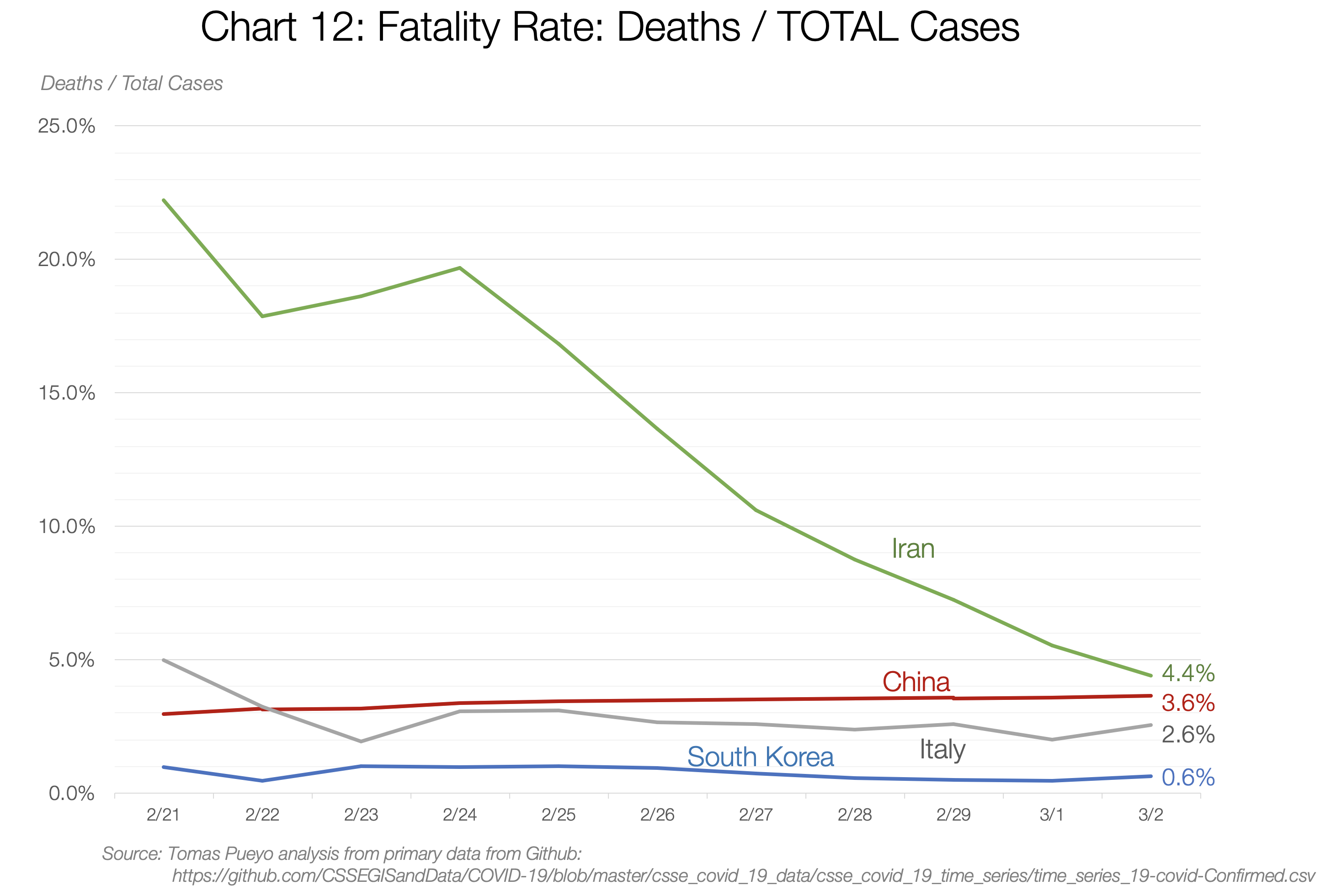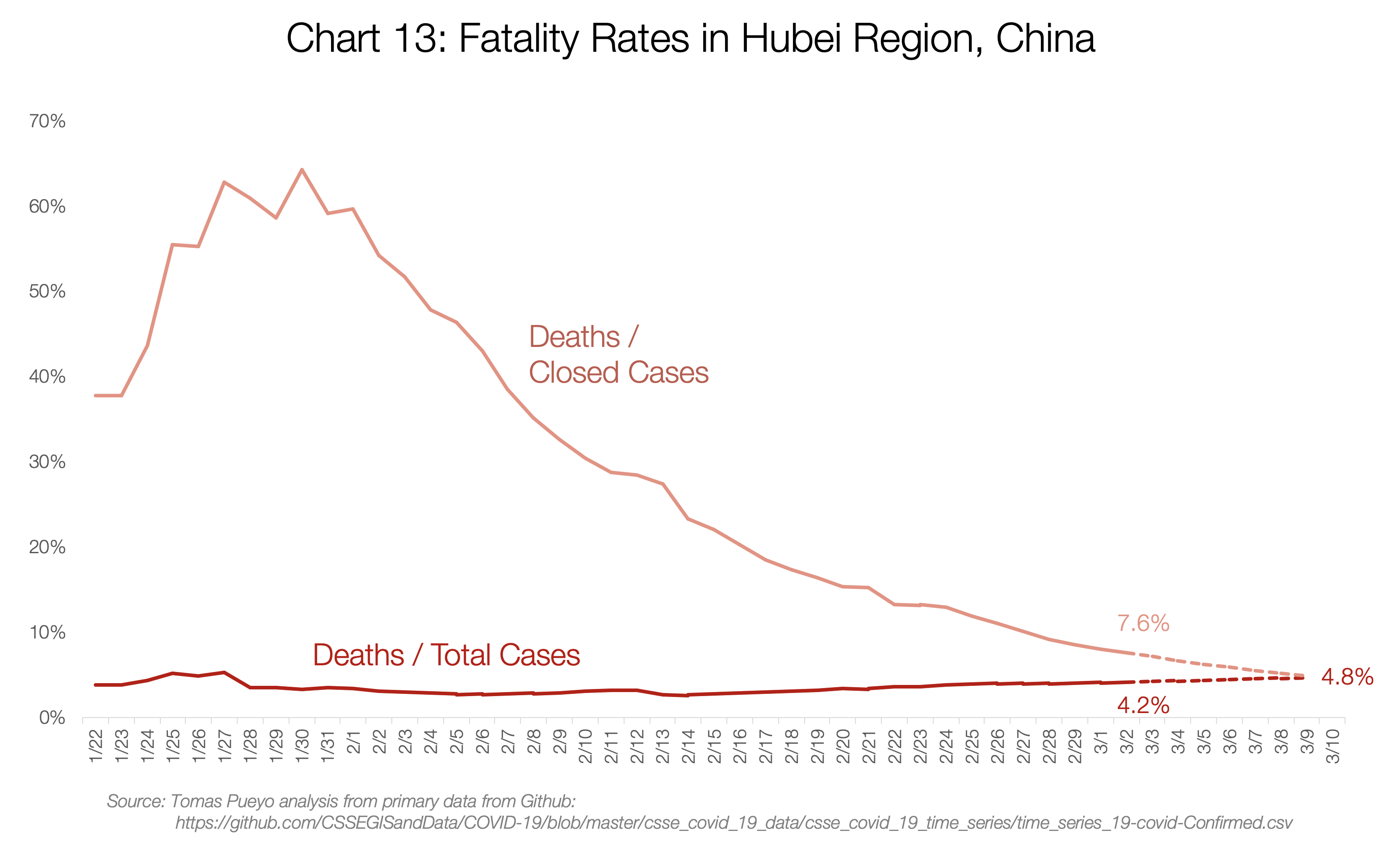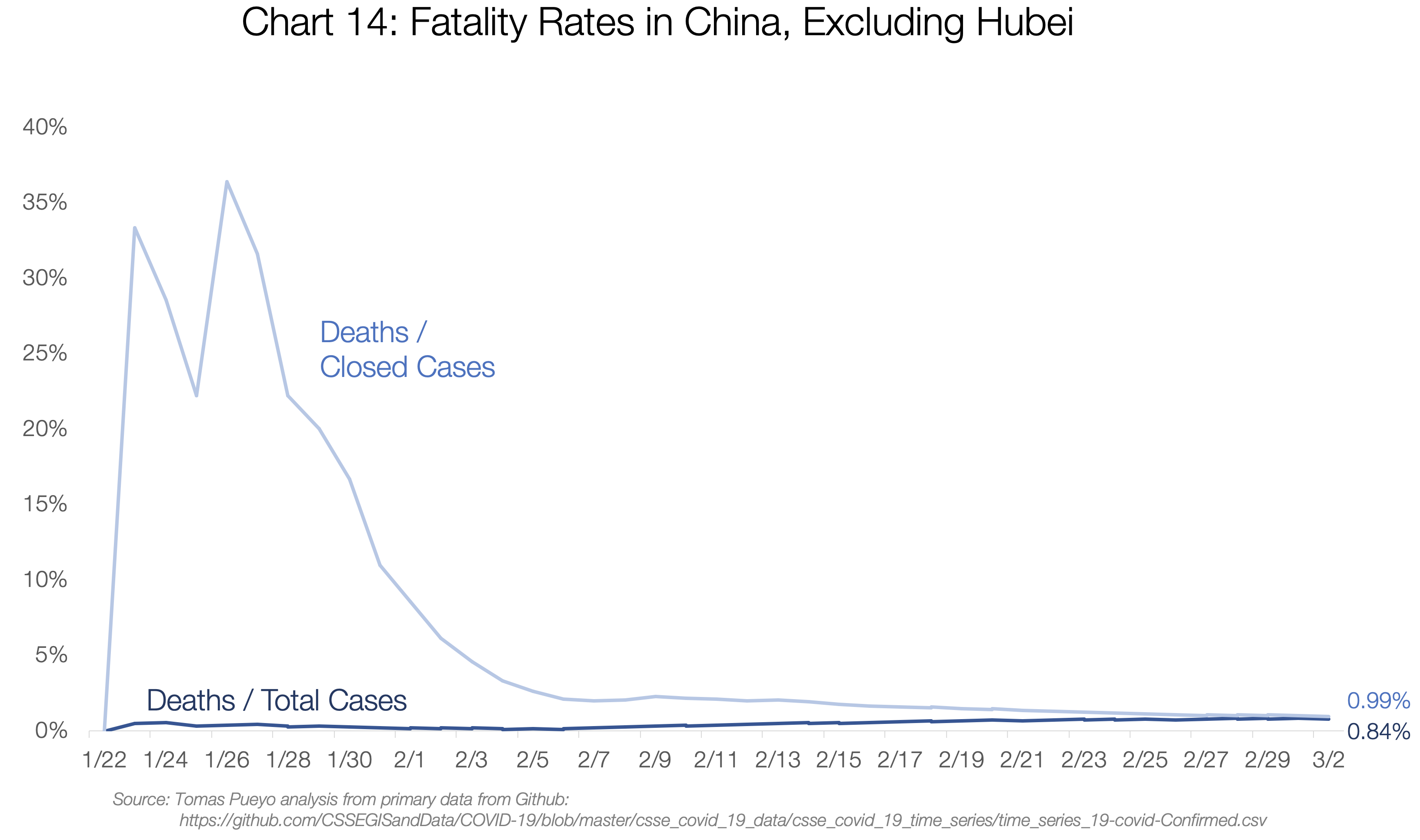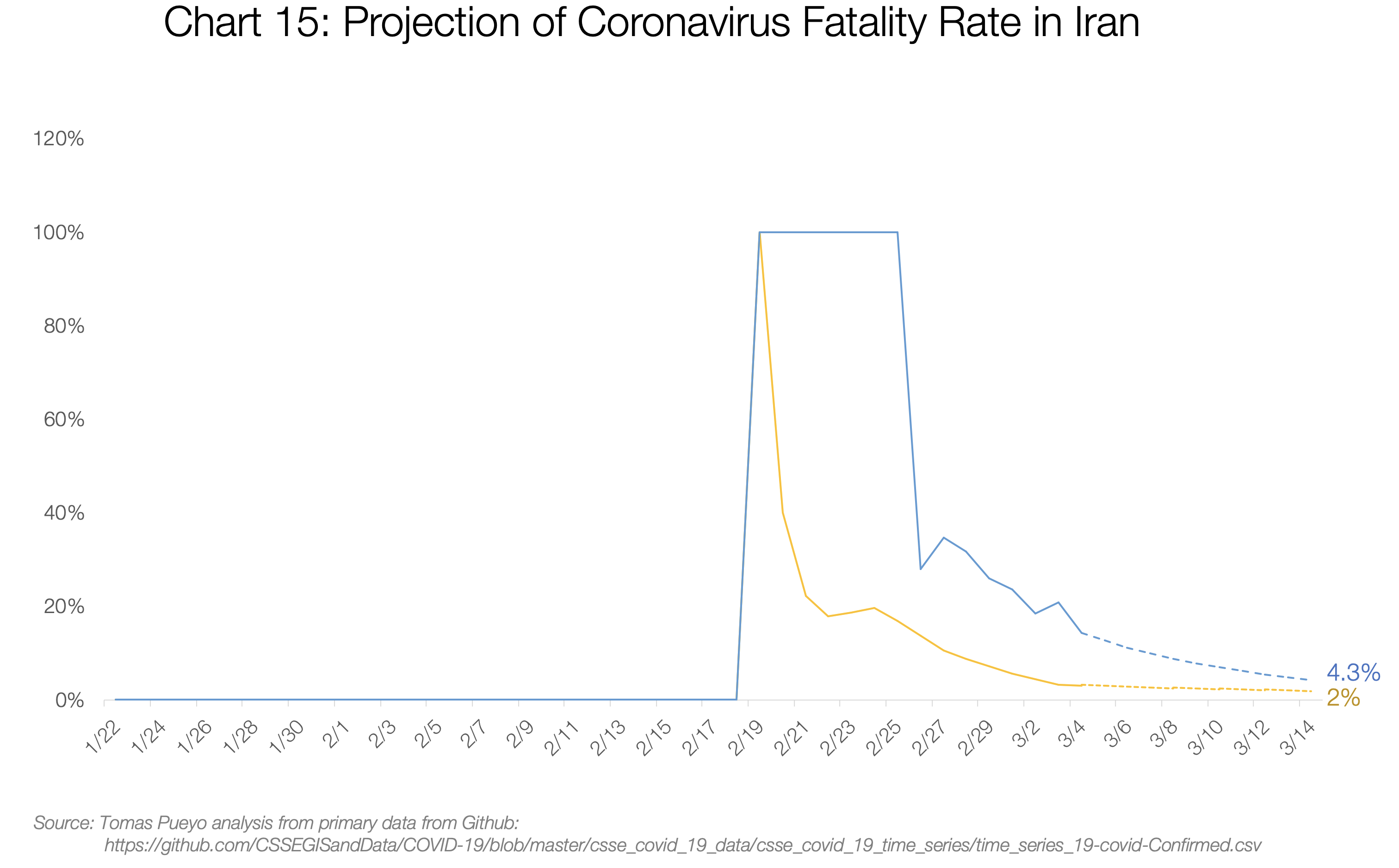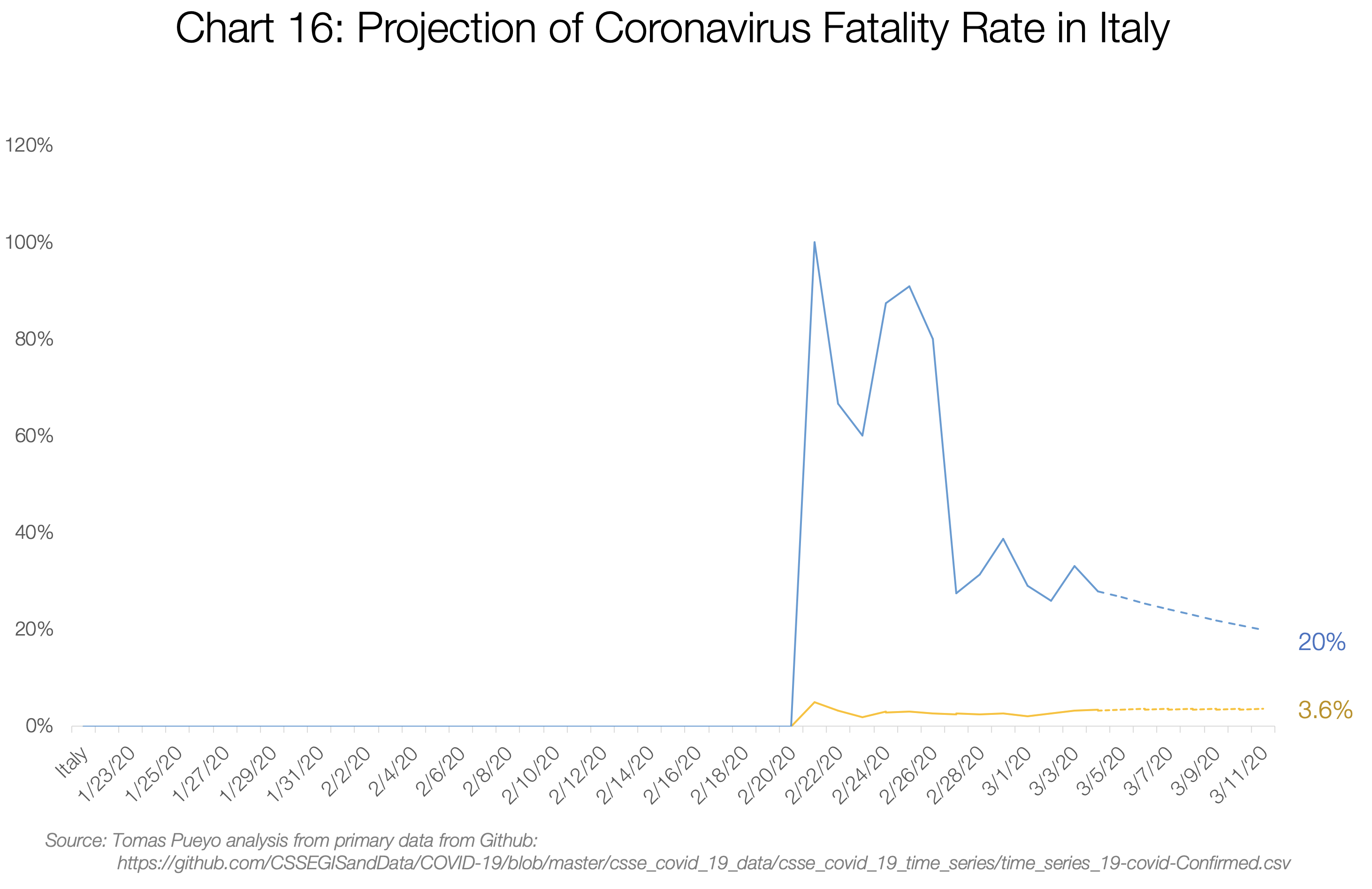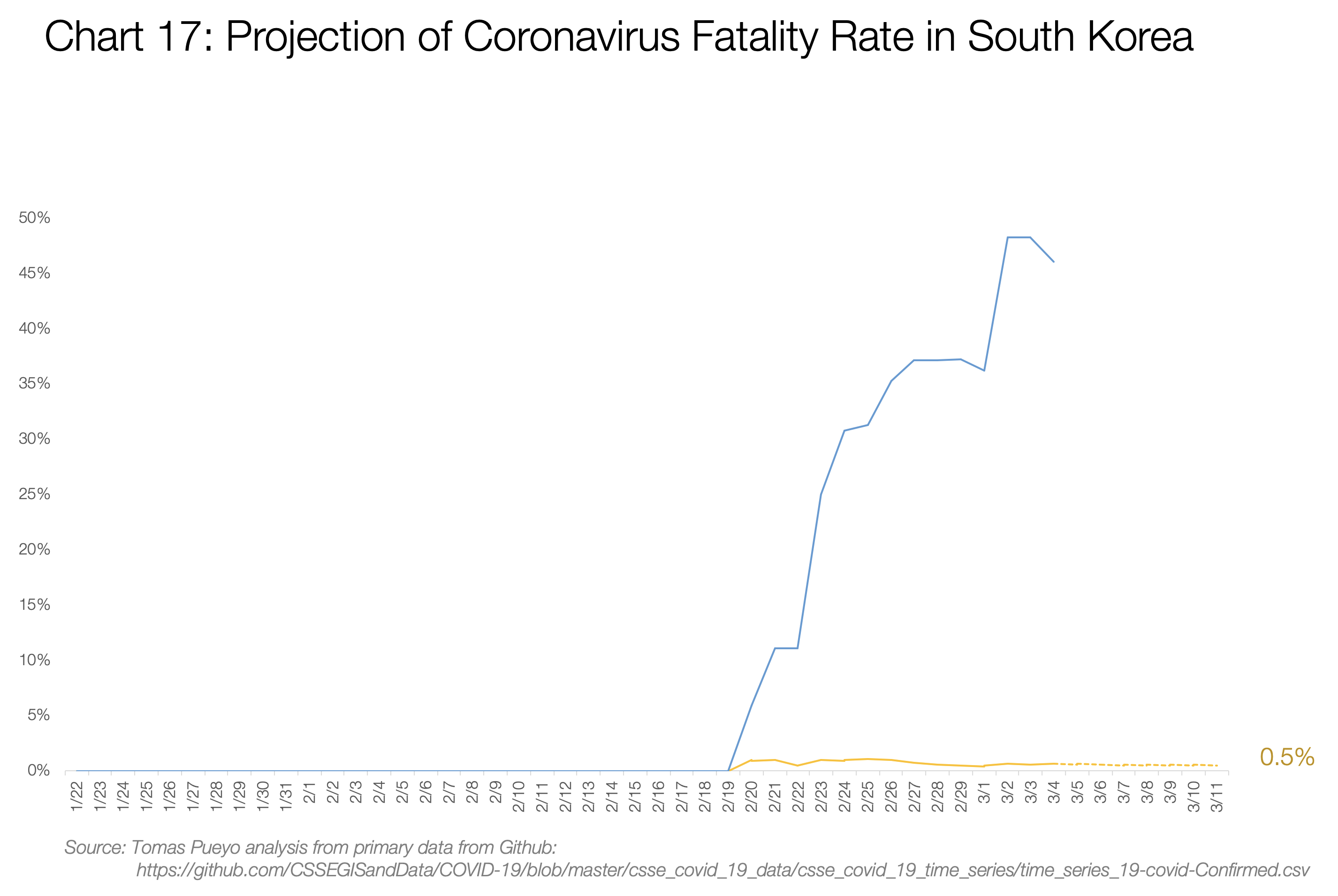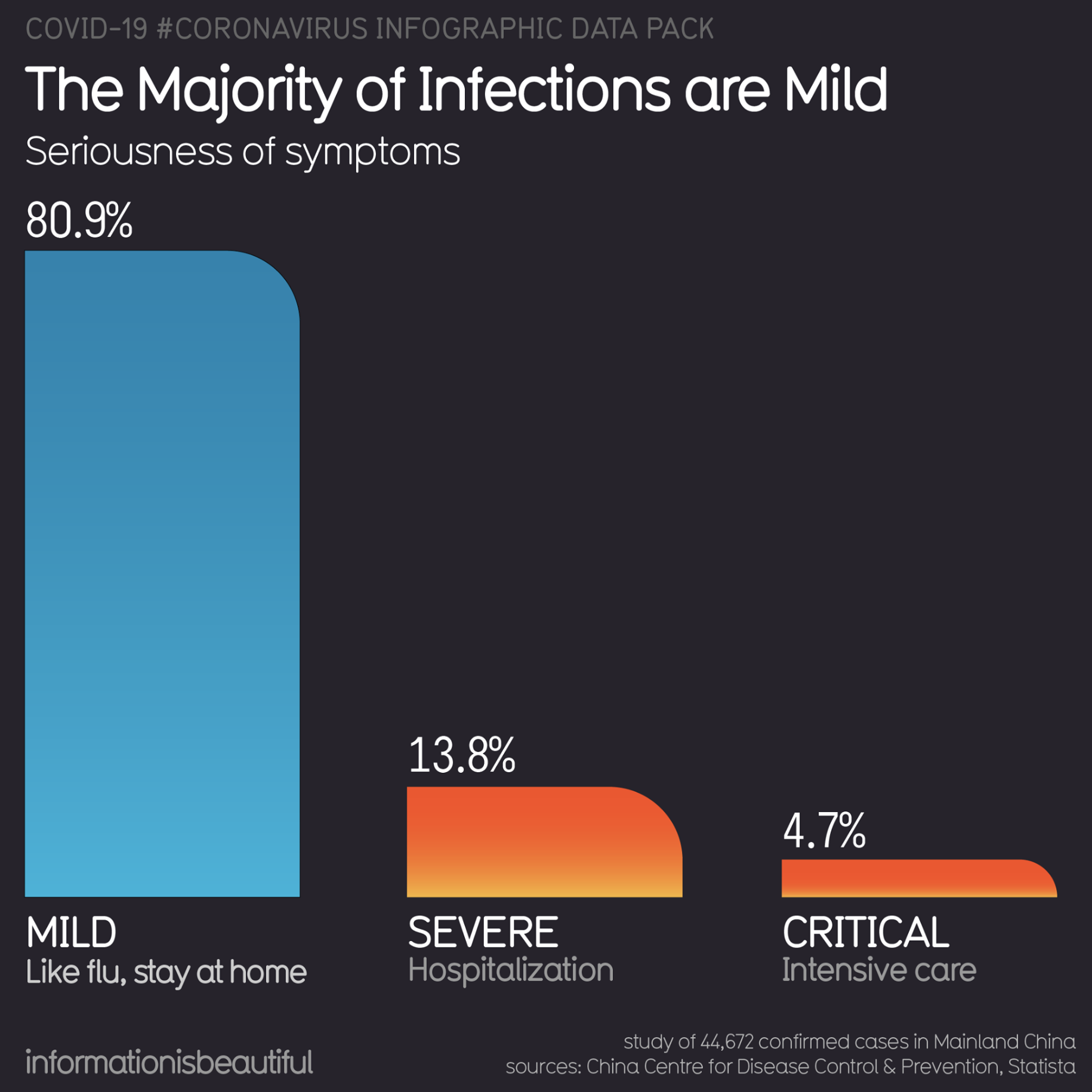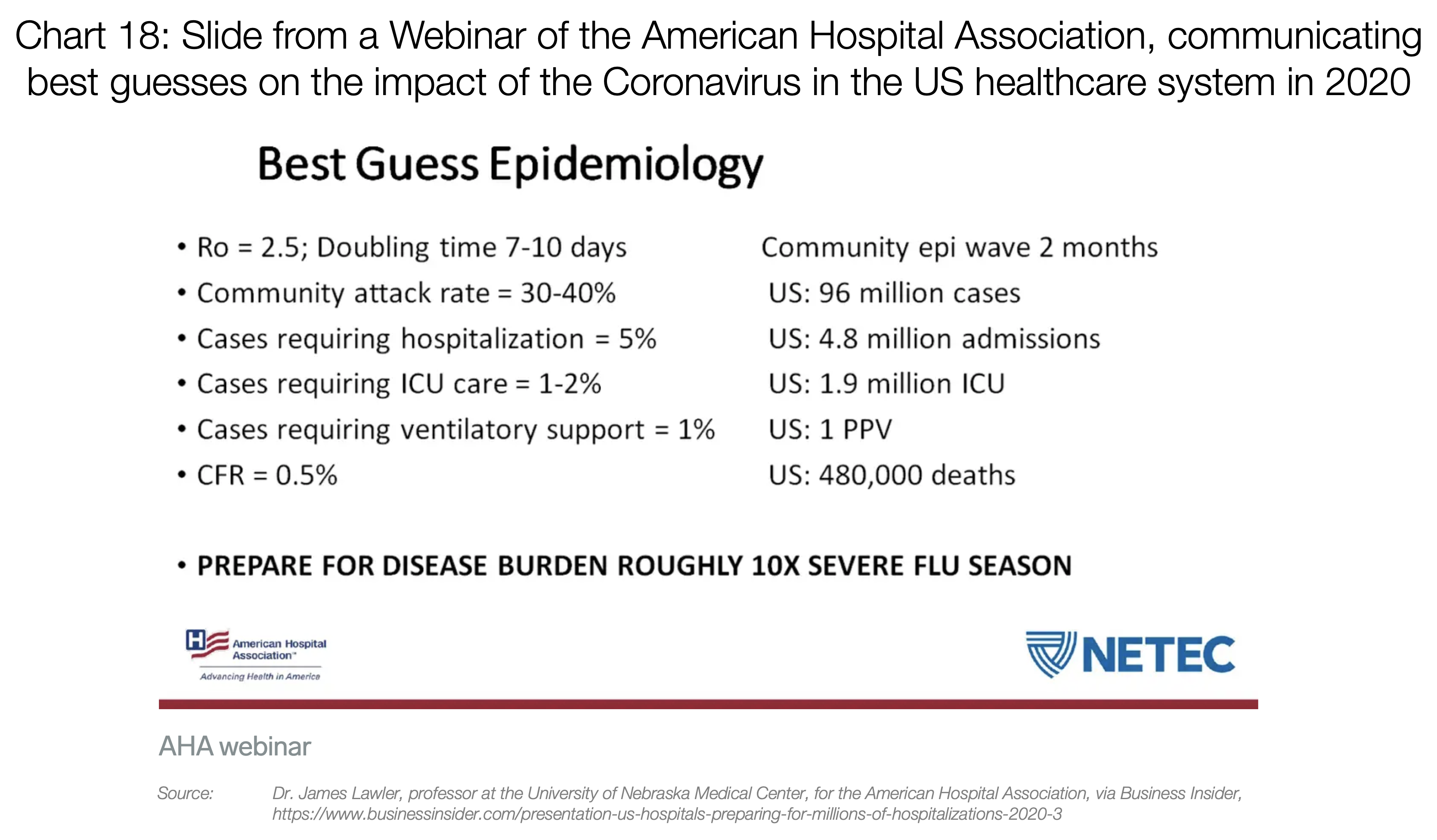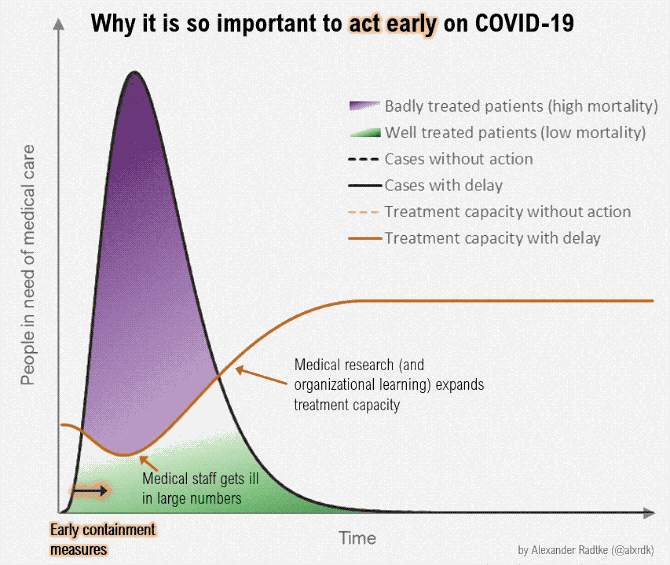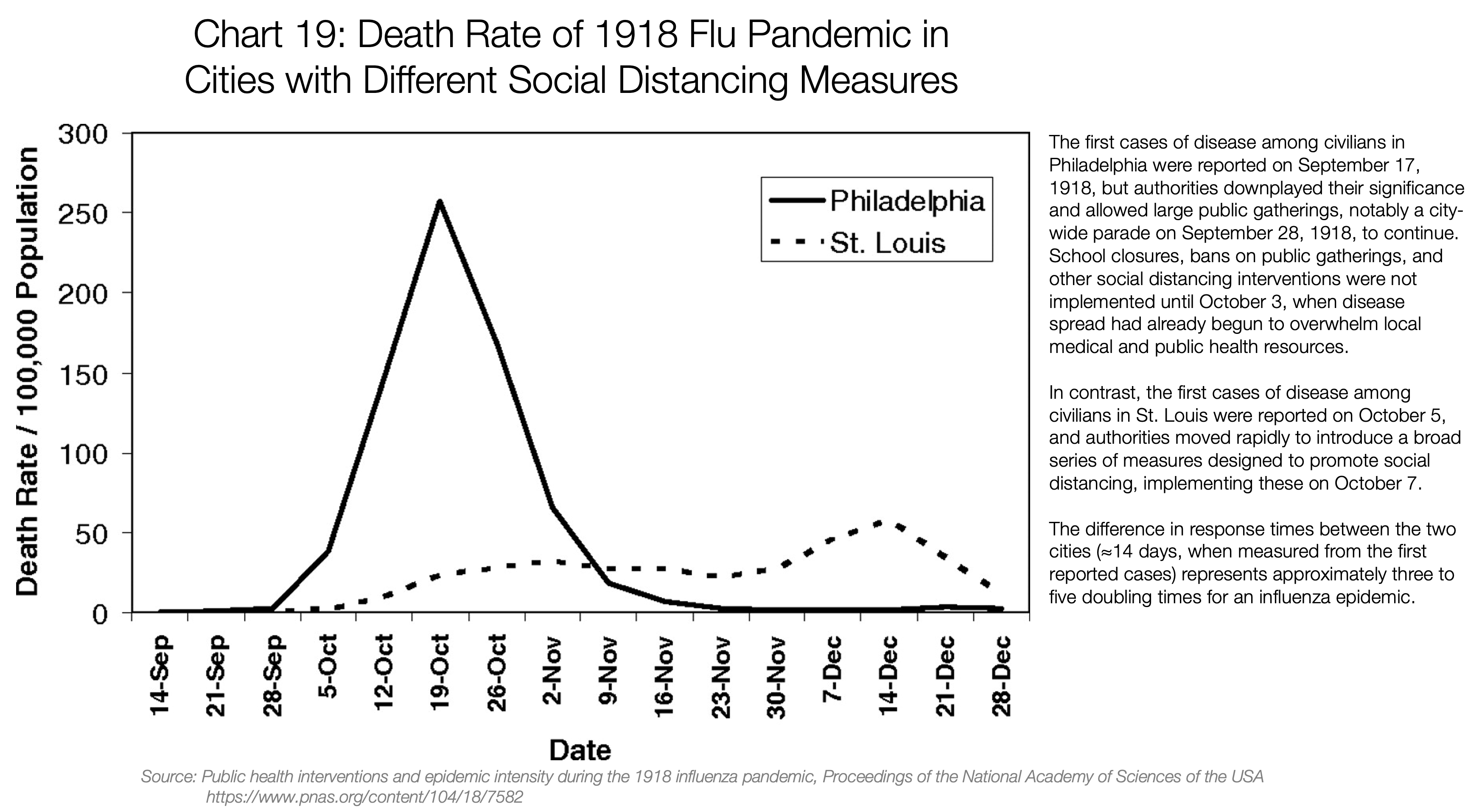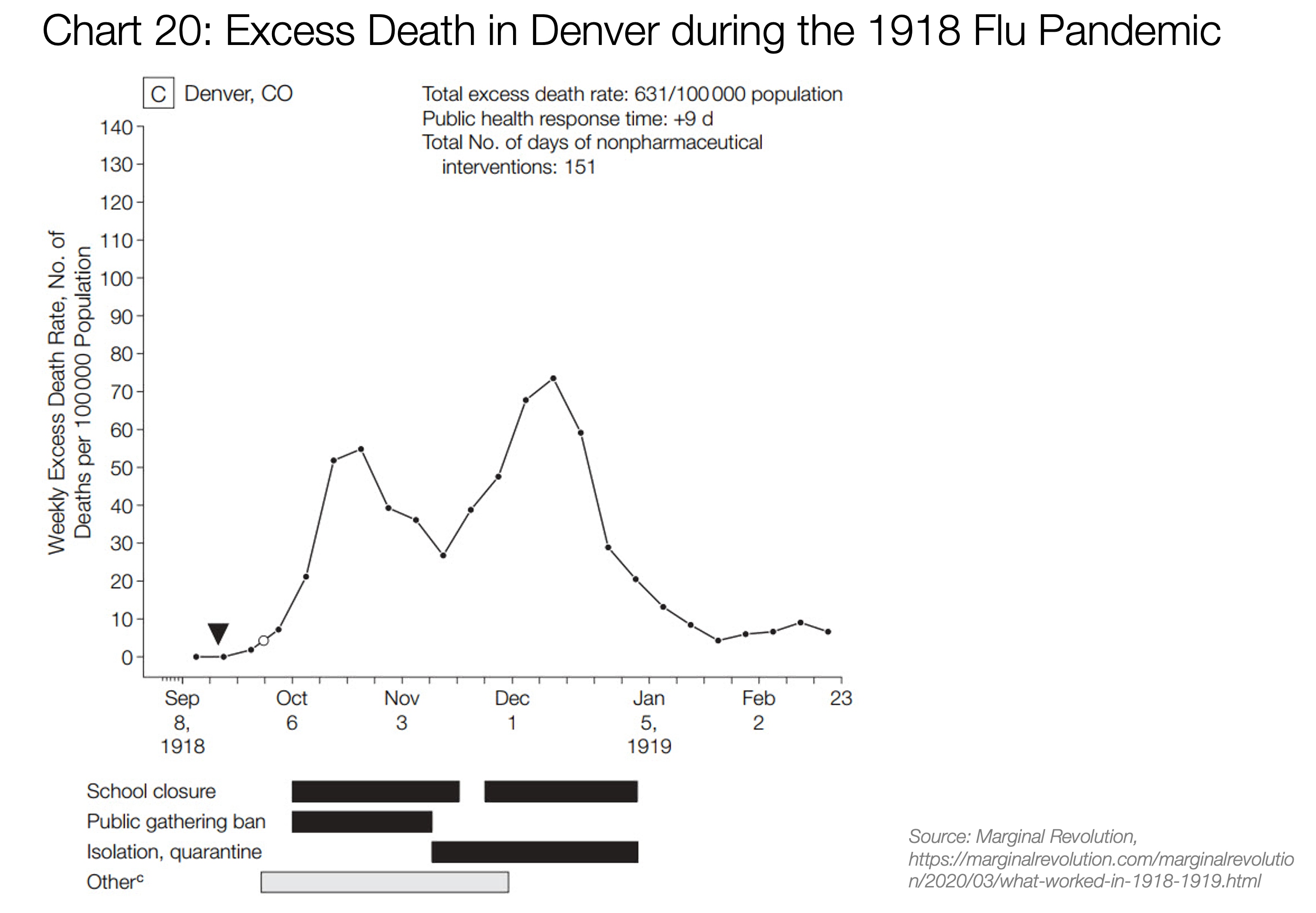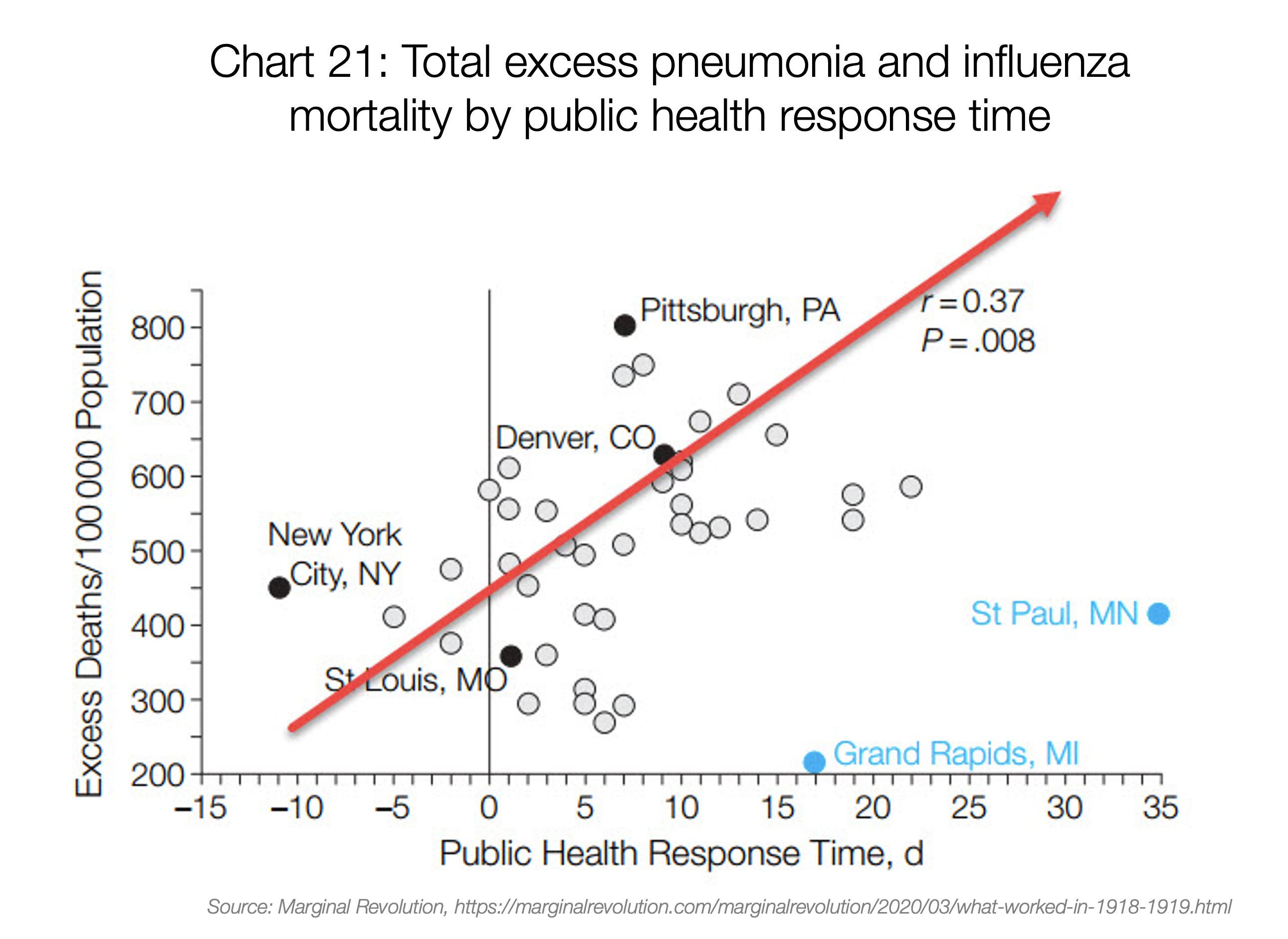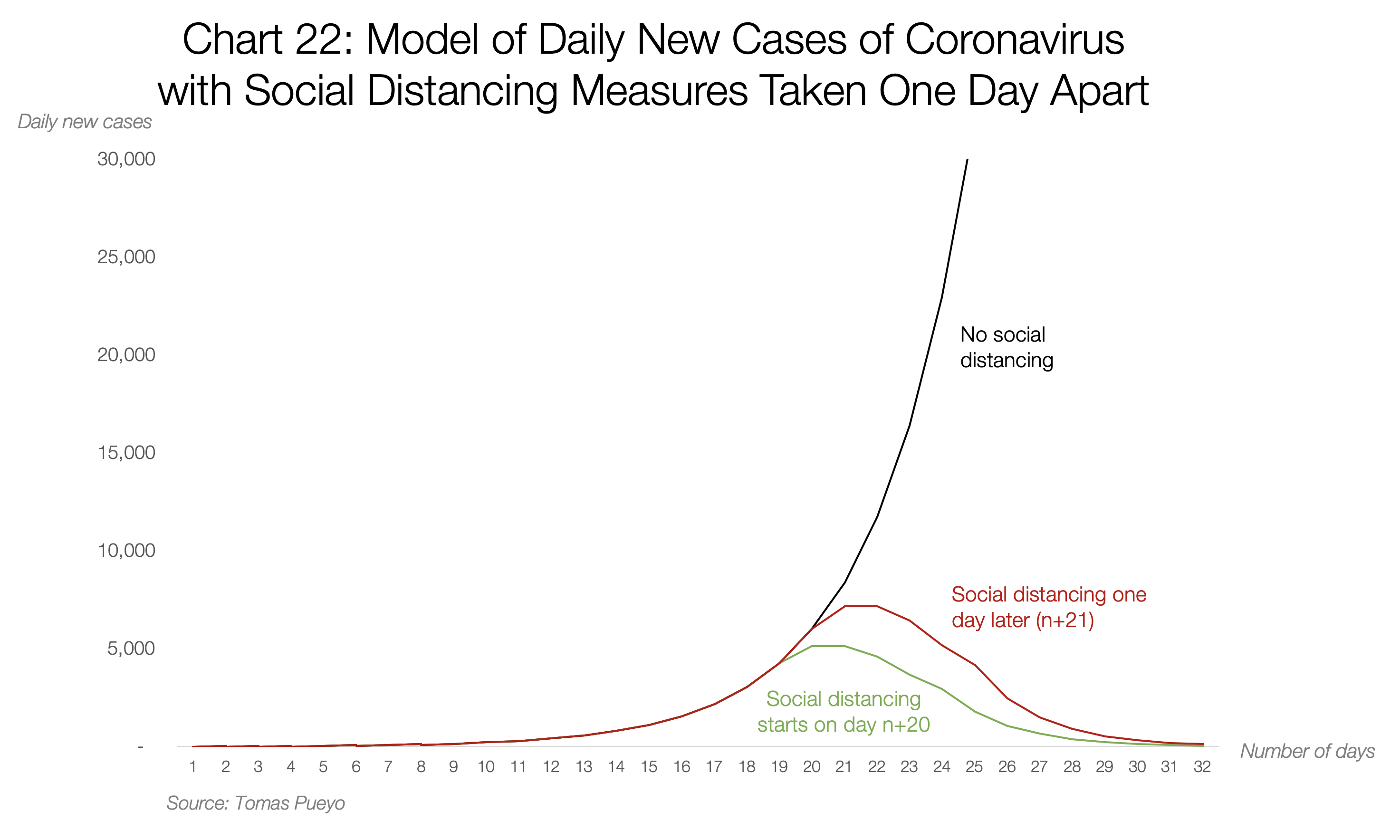What Will Be the Pressure on the System
Around 20% of cases require hospitalization, 5% of cases require the Intensive Care Unit (ICU), and around 1% require very intensive help, with items such as ventilators or ECMO (
extra-corporeal oxygenation).
The problem is that items such as ventilators and ECMO can’t be produced or bought easily. A few years ago, the US had a total of 250 ECMO machines, for example.
So if you suddenly have 100,000 people infected, many of them will want to go get tested. Around 20,000 will require hospitalization, 5,000 will need the ICU, and 1,000 will need machines that we don’t have enough of today. And that’s just with 100,000 cases.
That is without taking into account issues such as masks. A country like the US has only 1% of the masks it needs to cover the needs of its healthcare workers (12M N95, 30M surgical vs. 3.5B needed). If a lot of cases appear at once,
there will be masks for only 2 weeks.
Countries like Japan, South Korea, Hong Kong or Singapore, as well as Chinese regions outside of Hubei, have been prepared and given the care that patients need.
But the rest of Western countries are rather going in the direction of Hubei and Italy. So what is happening there?
What an Overwhelmed Healthcare System Looks Like
The stories that happened in Hubei and those in Italy are starting to become eerily similar. Hubei built two hospitals in ten days, but even then, it was completely overwhelmed.
Both complained that patients inundated their hospitals. They had to be taken care of anywhere: in hallways, in waiting rooms…
I heavily recommend this short Twitter thread. It paints a pretty stark picture of Italy today
Medico Humanitas su Facebook: "Situazione drammatica, altro che normale influenza"
Pubblichiamo l'intervento sui social di Daniele Macchini, medico alle Cliniche Humanitas Gavazzeni. Una testimonianza…
bergamo.corriere.it
Healthcare workers spend hours in a single piece of protective gear, because there’s not enough of them. As a result, they can’t leave the infected areas for hours. When they do, they crumble, dehydrated and exhausted. Shifts don’t exist anymore. People are driven back from retirement to cover needs. People who have no idea about nursing are trained overnight to fulfill critical roles. Everybody is on call, always.
That is, until they become sick. Which happens a lot, because they’re in constant exposure to the virus, without enough protective gear. When that happens, they need to be in quarantine for 14 days, during which they can’t help. Best case scenario, 2 weeks are lost. Worst case, they’re dead.
The worst is in the ICUs, when patients need to share ventilators or ECMOs. These are in fact impossible to share, so the healthcare workers must determine what patient will use it. That really means, which one lives and which one dies.
Coronavirus: 'We must choose who to treat,' says Italian doctor
An Italian doctor in Lombardy, a region of Italy that has been quarantined due to the new coronavirus (Covid-19)…
www.brusselstimes.com
“After a few days, we have to choose. […] Not everyone can be intubated. We decide based on age and state of health.” —Christian Salaroli, Italian MD.
All of this is what drives a system to have a fatality rate of ~4% instead of ~0.5%. If you want your city or your country to be part of the 4%, don’t do anything today.
3. What Should You Do?
Flatten the Curve
This is a pandemic now. It can’t be eliminated. But what we can do is reduce its impact.
Some countries have been exemplary at this. The best one is Taiwan, which is extremely connected with China and yet still has as of today fewer than 50 cases. This recent paper explain all the measures they took early on, which were focused on containment.
Response to COVID-19 in Taiwan: Big Data Analytics, New Technology, and Proactive Testing
This Viewpoint describes the outbreak response infrastructure developed by the Taiwanese government following the SARS…
jamanetwork.com
They have been able to contain it, but most countries lacked this expertise and didn’t. Now, they’re playing a different game: mitigation. They need to make this virus as inoffensive as possible.
If we reduce the infections as much as possible, our healthcare system will be able to handle cases much better, driving the fatality rate down. And, if we spread this over time, we will reach a point where the rest of society can be vaccinated, eliminating the risk altogether. So our goal is not to eliminate coronavirus contagions. It’s to postpone them.
The more we postpone cases, the better the healthcare system can function, the lower the mortality rate, and the higher the share of the population that will be vaccinated before it gets infected.
How do we flatten the curve?
Social Distancing
There is one very simple thing that we can do and that works: social distancing.
If you go back to the Wuhan graph, you will remember that as soon as there was a lockdown, cases went down. That’s because people didn’t interact with each other, and the virus didn’t spread.
The current scientific consensus is that this virus can be spread within 2 meters (6 feet) if somebody coughs. Otherwise, the droplets fall to the ground and don’t infect you.
The worst infection then becomes through surfaces: The virus survives for hours or days on different surfaces. If it behaves like the flu, it can survive for weeks on metal, ceramics and plastics. That means things like doorknobs, tables, or elevator buttons can be terrible infection vectors.
The only way to truly reduce that is with social distancing: Keeping people home as much as possible, for as long as possible until this recedes.
This has already been proven in the past. Namely, in the 1918 flu pandemic.
Learnings from the 1918 Flu Pandemic
You can see how Philadelphia didn’t act quickly, and had a massive peak in death rates. Compare that with St Louis, which did.
Then look at Denver, which enacted measures and then loosened them. They had a double peak, with the 2nd one higher than the first.
If you generalize, this is what you find:
This chart shows, for the 1918 flu in the US, how many more deaths there were per city depending on how fast measures were taken. For example, a city like St Louis took measures 6 days before Pittsburg, and had less than half the deaths per citizen. On average, taking measures 20 days earlier halved the death rate.
Italy has finally figured this out. They first locked down Lombardy on Sunday, and one day later, on Monday, they realized their mistake and decided they had to lock down the entire country.
Hopefully, we will see results in the coming days. However, it will take one to two weeks to see. Remember the Wuhan graph: there was a delay of 12 days between the moment when the lockdown was announced and the moment when official cases (orange) started going down.
How Can Politicians Contribute to Social Distancing?
If you’re a politician in a region affected by the coronavirus, you should immediately follow Italy’s example and order a lockdown.
This is what they ordered:
- Nobody can enter or exit lockdown areas, unless there are proven family or work reasons.
- Movement inside the areas is to be avoided, unless they are justified for urgent personal or work reasons and can’t be postponed.
- People with symptoms (respiratory infection and fever) are “highly recommended” to remain home.
- Standard time off for healthcare workers is suspended
- Closure of all educational establishments (schools, universities…), gyms, museums, ski stations, cultural and social centers, swimming pools, and theaters.
- Bars and restaurants have limited opening times from 6am to 6pm, with at least one meter (~3 feet) distance between people.
- All pubs and clubs must close.
- All commercial activity must keep a distance of one meter between customers. Those that can’t make it happen must close. Temples can remain open as long as they can guarantee this distance.
- Family and friends hospital visits are limited
- Work meetings must be postponed. Work from home must be encouraged.
- All sports events and competitions, public or private, are canceled. Important events can be held under closed doors.
This is
the least I would order. If you want to be safe, do it Wuhan style. People might complain now, but they’ll thank you later.
How Can Business Leaders Contribute to Social Distancing?
If you’re a business leader and you want to know what you should do, the best resource for you is
Staying Home Club.
Who's staying home because of COVID-19?
A list of all the companies WFH or events changed because of covid-19
stayinghome.club
It is a list of social distancing policies that have been enacted by US tech companies—so far, 138.
They range from allowed to required Work From Home, and restricted visits, travel, or events.
There are more things that every company must determine, such as what to do with hourly workers, whether to keep the office open or not, how to conduct interviews, what to do with the cafeterias… If you want to know how my company handled some of these, along with a model announcement to your employees,
here is the one my company used (
view only version here).
4. When?
It is very possible that so far you’ve agreed with everything I’ve said, and were just wondering since the beginning when to make each decision. Put in another way, what triggers should we have for each measure.
Risk-Based Model for Triggers
To solve this, I’ve created a
model.
Coronavirus - When Should You Close Your Office?
How To Use Coronavirus Work From Home Model This model should help you and your company make a decision on whether you…
docs.google.com
It enables you to assess the likely number of cases in your area, the probability that your employees are already infected, how that evolves over time, and how that should tell you whether to remain open.
It tells us things like:
- If your company has 100 employees in the Washington state area that has 11 coronavirus deaths, there’s a 25% chance at least one of your employees is infected, and you should close immediately.
- If your company has 250 employees mostly in the South Bay (San Mateo and Santa Clara counties, which together have 22 official cases and the true number is probably at least 54), by 3/9 you will have ~2% chances to have at least one employee infected.
- If your company is in Paris (intramuros), and it has 250 employees, today there’s a 0.85% chance that one of your employees has the coronavirus, and by tomorrow it will be 1.2%, so if you’re only comfortable with a 1% chance, you should close your office by tomorrow.
The model uses labels such as “company” and “employee”, but the same model be used for anything else: schools, mass transit… So if you have only 50 employees in Paris, but all of them are going to take the RER, coming across thousands of other people, suddenly the likelihood that at least one of them will get infected is much higher and you should close your office immediately.
If you’re still hesitating because nobody is showing symptoms, just realize
26% of contagions happen before there are symptoms.
Are You Part of a Group of Leaders?
This math is selfish. It looks at every company’s risk individually, taking as much risk as we want until the inevitable hammer of the coronavirus closes our offices.
But if you’re part of a league of business leaders or politicians, your calculations are not for just one company, but for the whole. The math becomes: What’s the likelihood that any of our companies is infected? If you’re a group of 50 companies of 250 employees on average, in the SF Bay Area, there’s a 35% chance that at least one of the companies has an employee infected, and 97% chance that will be true next week. I added a tab in
the model to play with that.
Conclusion: The Cost of Waiting
It might feel scary to make a decision today, but you shouldn’t think about it this way.
This theoretical model shows different communities: one doesn’t take social distancing measures, one takes them on Day n of an outbreak, the other one on Day n+1. All the numbers are completely fictitious (I chose them to resemble what happened in Hubei, with ~6k daily new cases at the worst). They’re just there to illustrate how important a single day can be in something that grows exponentially. You can see that the one-day delay peaks later and higher, but then daily cases converge to zero.
But what about cumulative cases?
In this theoretical model that resembles loosely Hubei, waiting one more day creates 40% more cases! So, maybe, if the Hubei authorities had declared the lockdown on 1/22 instead of 1/23, they might have reduced the number of cases by a staggering 20k.
And remember, these are just cases. Mortality would be much higher, because not only would there be directly 40% more deaths. There would also be a much higher collapse of the healthcare system, leading to a mortality rate up to 10x higher as we saw before. So a one-day difference in social distancing measures can end exploding the number of deaths in your community by multiplying more cases and higher fatality rate.
This is an exponential threat. Every day counts. When you’re delaying by a single day a decision, you’re not contributing to a few cases maybe. There are probably hundreds or thousands of cases in your community already. Every day that there isn’t social distancing, these cases grow exponentially.

